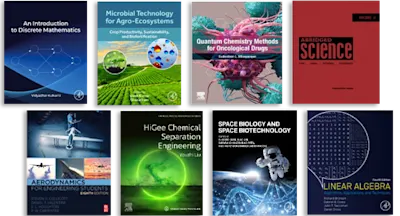
Quick Guide to Hemostasis and Transfusion Medicine
- 1st Edition - June 1, 2026
- Latest edition
- Authors: George A. Fritsma, Rance Chadwick Siniard, Brianna Miller, Lance A. Williams III
- Language: English
- Paperback ISBN:9 7 8 - 0 - 4 4 3 - 1 3 7 8 0 - 8
- eBook ISBN:9 7 8 - 0 - 4 4 3 - 1 3 7 8 1 - 5
Quick Guide to Hemostasis and Transfusion Medicine is a patient reference that recommends indication-based laboratory test selection and interpretation to diagnose and treat hemorr… Read more

- Presents a great resource for practical guidance that condenses hemostasis physiology and pathology, providing speedy, often lifesaving patient management
- Addresses the challenging issues that laboratory professionals face day to day
- Provides straightforward and timely recommendations for the selection and management of biological components
a. Patient history, bleeding assessment test protocol
b. Acquired versus congenital, isolated versus coagulopathy, systemic versus anatomic
2. Approach to thrombosis patient
a. Patient history
b. Acquired versus congenital thrombosis
c. Arterial versus venous thrombosis
3. Blood specimen management
4. Test utilization and indications
5. Antithrombotic therapy
a. Oral anticoagulants: warfarin and DOACs
b. Parenteral anticoagulants: heparin types
c. Direct thrombin inhibitors
d. Antiplatelet therapeutics
6. Platelets
a. Normal platelet function
b. Platelet disorders: thrombocytopenia and functional disorders
c. Immune and thrombotic thrombocytopenic purpura
d. Platelet function testing
e. Viscoelastometry
7. Coagulation
a. Normal coagulation cascade
b. Clot-based and chromogenic testing
8. Bleeding disorders: diagnosis and management
a. Acquired coagulopathies: liver disease, dietary deficiencies, kidney disease
b. Trauma-induced coagulopathy
c. Hemophilia: congenital single factor deficiencies
d. Von Willebrand disease
e. Disseminated intravascular coagulation
f. Laboratory protocols
g. Viscoelastometry
9. Thrombophilia
a. Congenital thrombosis risk factors
b. Antiphospholipid syndrome
c. Heparin-induced thrombocytopenia with thrombosis
d. Thromboinflammation
e. Laboratory protocols
10. Transfusion safety
11. Blood donation, processing, management
a. Donor qualification, whole blood, plateletpheresis, plasmapheresis
b. Directed donations
12. Blood components: Red blood cells, leukocyte-reduction, CMV-negative products, irradiated products, plasma, cryoprecipitate, platelet concentrate, whole blood, coagulation factor concentrates
13. Patient blood management: medical transfusion decisions, transfusion refusal
a. Urgent blood need, group O whole blood
b. Massive transfusion protocol
c. Transfusion of neonates and neonatal immune thrombocytopenia
d. Platelet concentrates
e. Transfusion in autoimmune hemolytic anemia, sickle cell disease, IgA deficiency, etc
f. Progenitor cell transplant
14. Managing adverse transfusion effects: signs and symptoms—immediate and delayed, laboratory investigation, care
15. Therapeutic apheresis: indications, types, technical and clinical considerations
16. Features
a. Glossary and abbreviations
b. Table of tables
c. Table of figures
d. Table of equations
e. Reference intervals and therapeutic targets
f. Index
g. References
- Edition: 1
- Latest edition
- Published: June 1, 2026
- Language: English
GF
George A. Fritsma
RS
Rance Chadwick Siniard
BM
Brianna Miller
Brianna Miller is an Assistant Professor in the Medical Laboratory Sciences program at the University of Alabama at Birmingham. She holds a Master’s degree in Clinical Laboratory Science and an advanced certification as a Specialist in Blood Banking. After beginning her career at UAB Hospital in the Transfusion Medicine Service as a Medical Laboratory Scientist, she quickly moved into the position of Antibody Specialist. Eventually, she shifted to the academic side of UAB, advancing to an Assistant Professor. Mrs. Miller’s main disciplines of teaching include Transfusion Medicine and Hemostasis, but she also teaches various subjects in laboratory medicine to students in programs of Physician Assistants, Physical Therapy, Optometry, Biomedical Sciences, and Clinical Pathology Residents.
LW